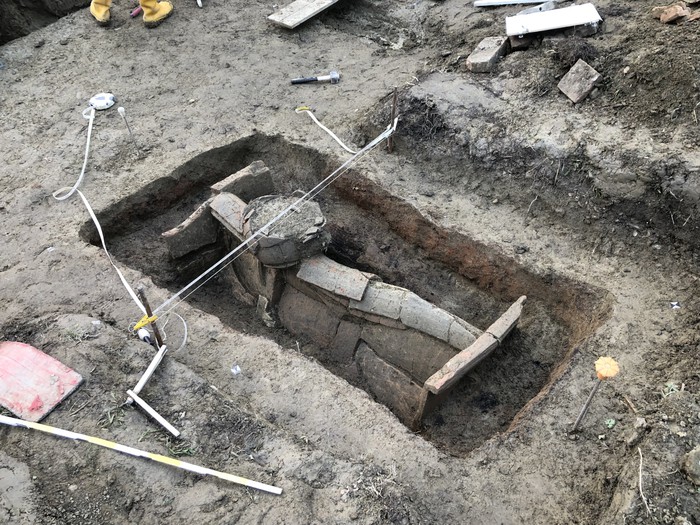(ANSA) - URBANIA, DEC 26 - Discoveries of Roman burials in Urbania (Pesaro Urbino), in the Muraglione locality, during excavation work for the installation of a sewage collector from Marche Multiservizi.
The Roman burials constitute a small group of four tombs, perhaps to be connected to a Roman farm for the agricultural exploitation of the territory, dating back to the first centuries of the imperial age (I-II century AD).
The news was given by the Superintendence of Archeology, Fine Arts and Landscape of the north Marche. The area of the discovery was already known for other Roman finds in the 1980s, as well as for the recovery of some funerary epigraphs as early as the 16th century. The excavations found are partially damaged by the construction of some nineteenth-century structures, perhaps connected to the old railway line, but the careful archaeological excavation has allowed us to discover a considerable variety of funerary rituals. It is in fact a "bi-ritual" necropolis, with some deceased deposed inhumed and other creamed, as explained by the Superintendency. He adds: "Letombe are made with tiles, hollow tiles and bent tiles, forming real crates". A bustum case is well preserved,a rectangular pit prepared for the direct cremation of the fate on the pyre, with the walls burned and reddened by the fire, in which the box of ecoppi tiles was then built, with the creation of a "libatory channel" using an overturned and sawn amphora. "This particular structure was used during the rites of profusiones, the offerings or libations that could represent the symbolic pastel for the deceased, and which were poured directly into the burial through this channel", the experts say.This particular structure was used during the rites of profusiones, the offerings or libations that could represent the symbolic pastel for the deceased, and which were poured directly into the burial through this channel ", the experts say.This particular structure was used during the rites of profusiones, the offerings or libations that could represent the symbolic pastel for the deceased, and which were poured directly into the burial through this channel ", the experts say.
Very similar structures and rituals were also found in Urbino, at the crossroads of Croce dei Missionari in the current area of the Consortium's rotatory, during excavations in the 1970s and 2005.
The finds have been secured and taken with all the necessary precautions and are currently kept in the deposits of the Ducal Palace of Urbania.
(HANDLE).

